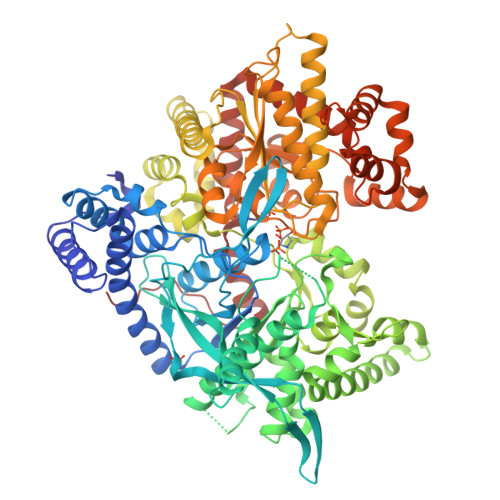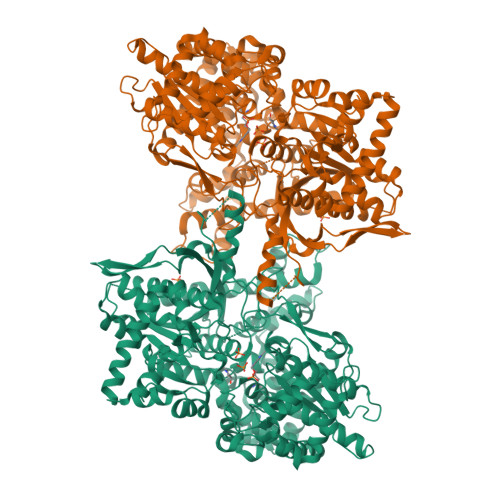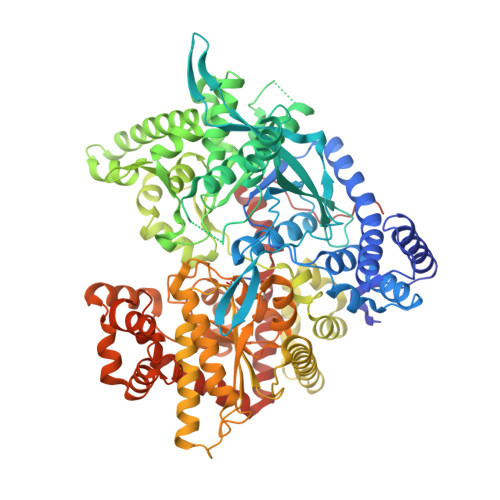Iminosugars as potential inhibitors of glycogenolysis: structural insights into the molecular basis of glycogen phosphorylase inhibition.
Oikonomakos, N.G., Tiraidis, C., Leonidas, D.D., Zographos, S.E., Kristiansen, M., Jessen, C.U., Norskov-Lauritsen, L., Agius, L.(2006) J Med Chem 49: 5687-5701
- PubMed: 16970395
- DOI: https://doi.org/10.1021/jm060496g
- Primary Citation of Related Structures:
2G9Q, 2G9R, 2G9U, 2G9V - PubMed Abstract:
Iminosugars DAB (5), isofagomine (9), and several N-substituted derivatives have been identified as potent inhibitors of liver glycogen phosphorylase a (IC(50) = 0.4-1.2 microM) and of basal and glucagon-stimulated glycogenolysis (IC(50) = 1-3 microM). The X-ray structures of 5, 9, and its N-3-phenylpropyl analogue 8 in complex with rabbit muscle glycogen phosphorylase (GPb) shows that iminosugars bind tightly at the catalytic site in the presence of the substrate phosphate and induce conformational changes that characterize the R-state conformation of the enzyme. Charged nitrogen N1 is within hydrogen-bonding distance with the carbonyl oxygen of His377 (5) and in ionic contact with the substrate phosphate oxygen (8 and 9). Our findings suggest that the inhibitors function as oxocarbenium ion transition-state analogues. The conformational change to the R state provides an explanation for previous findings that 5, unlike inhibitors that favor the T state, promotes phosphorylation of GPb in hepatocytes with sequential inactivation of glycogen synthase.
Organizational Affiliation:
Institute of Organic and Pharmaceutical Chemistry, The National Hellenic Research Foundation, Athens 11635, Greece. ngo@eie.gr





















